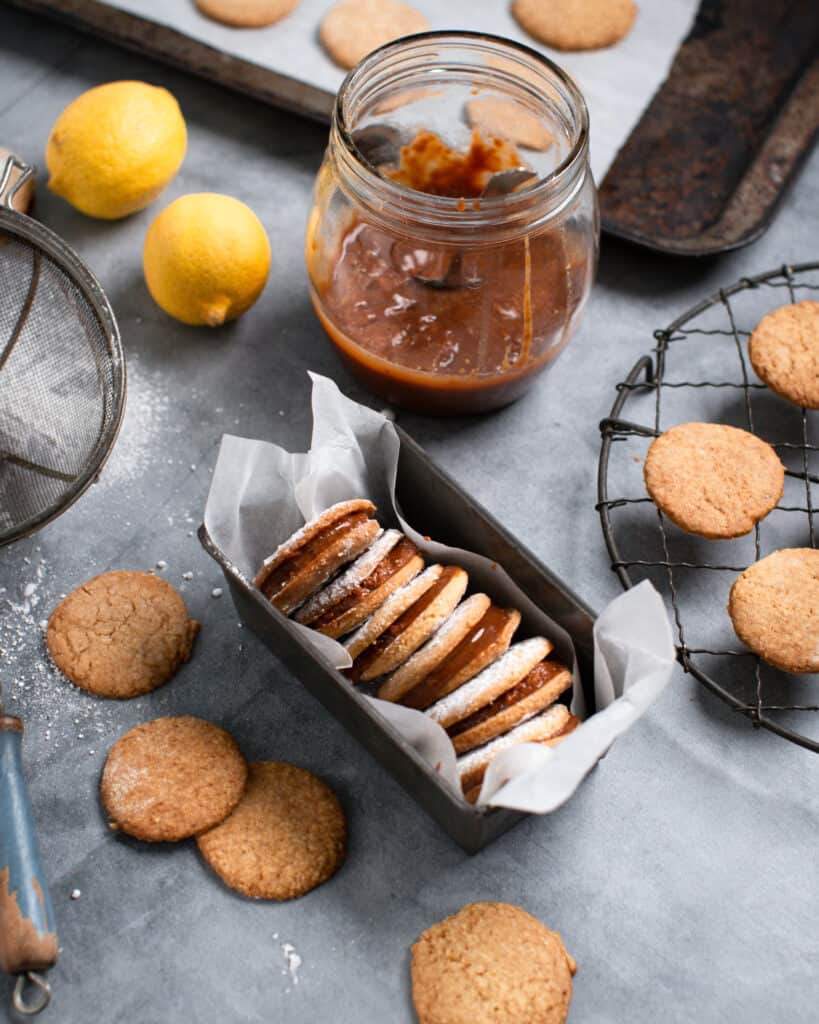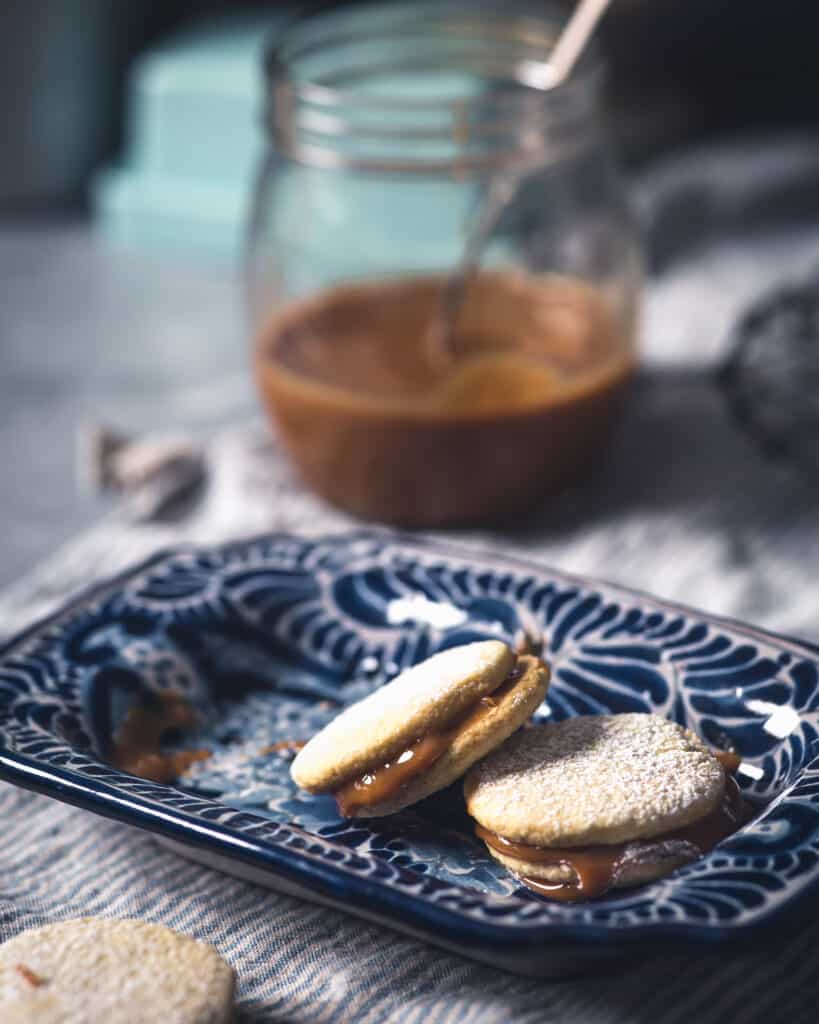
Dulce de Leche is a popular spoon candy from Latin America and it is also popular here on the border of Texas.
However, when I was growing up, we never said Dulce de Leche. We always referred to that luscious brown goat’s milk spoon candy as cajeta. My parents or grandparents would bring small, round white paper wrapped wooden boxes back from their border visits. We would carefully remove the decorative foil outer bands (even though the color was never indicative of the flavor, I always made sure to select the box with the hot pink metallic band.) The adults would help pry the wooden box open, and there inside, like a gooey, sweet oyster, was the prize. We would spoon out the rich, slightly tangy goat’s milk caramel, and suck on the spoon until it tasted like metal again.
Sweet memories
Sitting at my grandmothers table, eating sticky candy with a long iced tea spoon, while avoiding getting it on her tablecloth is a favorite memory of little me in my days of innocence. I was probably wearing my summer shorts, and I am absolutely sure I was barefooted (I didn’t wear shoes regularly until I was in high school.)
Fast forward to adulthood. My love for food evolved into a career of studying and writing about the foods of the Americas. My Spanish improved, and I began to learn the subtle differences how Spanish is different nations.

A rose by any other name
Horror of horrors, I learned that for some Spanish speakers, the word cajeta means “poo.”
So nowadays, the PC term for any milk caramel, which is wildly popular throughout any Spanish speaking country, is Dulce de Leche which only means “milk candy.” Nothing else. No double entendres. But for me, not as sweet, as there is no nostalgia attached.
Although I very much wanted to create a petit four recipe using Dulce de Leche, I couldn’t help but reminisce about my connection to this sweet candy.
But as they say, a rose by any name smells as sweet. Dulce de Leche, no matter what it is called, is just as delicious too.
Click here for my recipe for Alfajores which uses dulce de leche as a sandwich cookie filling!
PrintDulce de Leche is a traditional spoon candy
- Cook Time: 90min+
- Total Time: 0 hours
- Yield: 2 cups (480ml) 1x
Ingredients
1 goat or cow milk (1l)
1 cup sugar (200g)
1/2 tsp. baking soda (2.5g)
Instructions
Combine the milk and sugar in a heavy 4 qt enameled cooking pot (4 Lt.) Make sure you use a cooking pot that is large enough so that it won’t boil over and spill.
Heat over medium heat while stirring constantly. Once the milk comes to a full boil add ½ tsp. of baking soda and turn off the heat. The mixture will bubble and foam so be careful that the mixture doesn’t boil over. Keep stirring to keep the bubbles to a minimum. Once the milk has settled down, turn the heat back on the stove and let the mixture return to a simmer while you stir it. Start a timer for 10 minutes and allow the milk to simmer.
As the milk continues to cook, you will notice that you can let it simmer without it burning. Keep checking on the milk and stirring, but you can let it simmer for a minute or two without stirring. When your 10 minutes is up, start your timer again.
I find that checking on the dulce de leche every ten minutes is a great method for keeping an eye on the mixture.
It takes about 1 hour to get the dulce de leche to 225°F (107.2°C) and about 90 minutes to get it to 235°F (112.7°C) But bear in mind your stove, your cooking pot, and your cooking flame will change the cooking time. Just keep an eye on the temperature.
The dulce de leche is fully cooked when it reaches a temperature between 220°F (104.4°C) and 235°F (112.7°C). As the dulce de leche continues to cook, the mixture will become darker and thicker. Cook to your desired degree of doneness.
My personal preference is a spoon candy cooked to 225°F (107.2°C) which has a rather blond color. However, a thicker version cooked to 235°F (112.7°C) is better for cookie fillings.
Notes
For a larger recipe (which takes more time) here are the ingredients
1 gallon goat’s milk (4L)
4 cups sugar (800g)
1 tbsp. baking soda

Leave a Reply